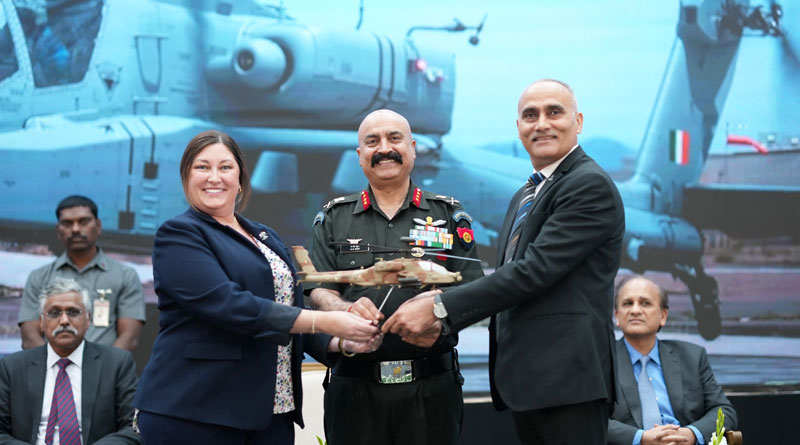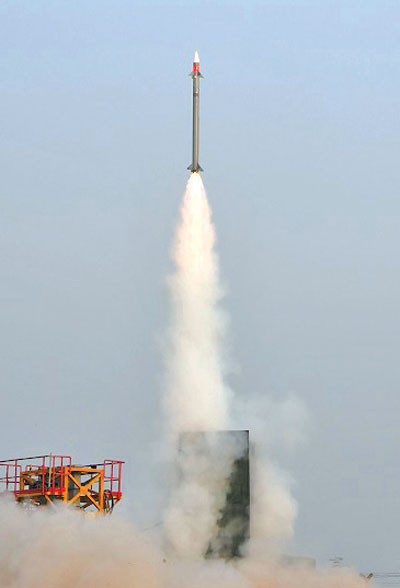OEMs are partnering with domestic companies to Make in India
Smruti Deshpande
In sectors where 100 per cent foreign direct investment (FDI) is not allowed by law in India, foreign Original Equipment Manufacturers (OEM) can invest in joint ventures (JV) with Indian counterparts. The Indian government announced in May 2020 that the FDI limit in defence production will be raised to 74 per cent from 49 per cent under the automatic route as part of the reform in the defence sector to boost self-reliance.

According to Invest India, the ministry of defence set a target of achieving a turnover of 25 million USD in aerospace and defence manufacturing by 2025, which includes 5 billion USD in exports. Till October 2022, 595 industrial licences have been issued to 366 companies operating in the defence sector.
As a result of India seeking greater collaboration with foreign OEMs, a number of global manufacturers have set up shop in India in partnership with Indian companies. While this helps the armed forces get the required platforms within the country, the local defence industry can easily supply the spare parts. Today, major global defence conglomerates have partnered with Indian public and private manufacturers for a number of defence platforms ranging from missiles to aircraft.
JVs, however, are not a recent phenomenon in the Indian defence industry. One of the most successful joint ventures to have come out is the BrahMos Aerospace. The JV was set up in 1998 between India’s Defence Research and Development Organisation (DRDO) and Russia’s NPO Mashinostroyeniya. It started with an initial investment of Rs 1,300 crore. Today, the JV is worth more than Rs 40,000 crore. The JV was formed at a time when Russia was undergoing financial turmoil. At the Manufacturing Innovation Conclave organised by the Confederation of Indian Industry in 2019, former CEO and MD of BrahMos Aerospace, Sudhir Mishra said India should have entered into more collaborations.
Mahindra and Mahindra (M&M) had a JV with BAE Systems of the UK before it decided to acquire 26 per cent stake in its defence joint venture with BAE Systems, ending the three-year old partnership in 2013. The idea for the Defence Land Systems India was conceived of in 2009 and the intention was to produce high-mobility armoured and bullet-proof vehicles as well as artillery items.
Kalyani and Rafael
The Kalyani Rafael Advanced Systems (KRAS) joint venture between India’s Kalyani Group and Israel’s Rafael Advanced Systems Ltd in Hyderabad was inaugurated in 2017. It is spread across 24,000sqft. The Rs 70 crore unit will cater to the Indian armed forces and export market. At that time this was India’s first private sector advanced defence subsystems manufacturing entity. The aim of the JV is to develop a wide range of advanced capabilities such as Command Control and Guidance, Electro-Optics, Remote Weapon Systems, Precision Guided Munitions and System Engineering for System Integration.
The JV was started with the aim of manufacturing Spike anti-tank guided missiles for the army. But the plan could not go through as the army sought to procure a small quantity of the Spike missiles under the emergency procurement. In 2019 the JV received a 100 million USD order to make Barak-8 missile kits for the army and the air force. In December 2022 it rolled out the 100th missile kit of Barak-8, or Medium Range Anti-Ship Missile System (MRSAM). The company has set a target of providing 1,000 MRSAM to the armed forces. The MRSAM is a high response, quick reaction, vertically launched supersonic missile designed to neutralise enemy aerial threats such as missiles, aircraft, guided bombs and helicopters. Different variants are used by all the three armed forces. Rafael has invested more than 250 million USD in India as of now.

L&T-MBDA JV
India’s Larsen & Toubro (L&T) and European conglomerate MBDA set up a JV, the L&T MBDA Missile Systems Ltd (LTMMSL) in India in 2017 to develop and supply missile and missile systems to meet the growing requirements of the armed forces. The JV initially aimed at developing and supplying fifth generation Anti-Tank Guided Missiles (ATGM-5) for coastal batteries and high speed target drones.
Within one year of its inception, the joint venture responded to RFIs by offering the ATGM 5, Short Range Surface to Air Missile (SRSAM) and MRSAMs.
In 2020, with an eye on domestic and global markets, the LTMMSL set up the assembly, inert integration (without explosives) and testing facility for Missile Sub-systems and Missile Weapon Launch Systems spread across an area of 16,000 square metre in a Special Economic Zone (SEZ) at Coimbatore. It forms a part of the Tamil Nadu Defence Industrial Corridor. The JV is manufacturing the MICA equipment and missile launchers in Coimbatore. It is said to be exporting these missiles while some are supplied to the IAF for its Mirage-2000 fighters.
The LTMMSL also responded to the Indian Navy’s air defence requirement for SRSAMs by offering its vertical launch Sea Ceptor air defence system. Going forward, the LTMMSL is offering the Exocet MM 40 Block 3 anti-ship missile, and the ATGM-5 to the Indian armed forces.
Tata-Lockheed Martin
The Tata Advanced Systems Limited (TASL) and the US’ Lockheed Martin came together in 2010 to form the JV, the Tata-Lockheed Martin Aerostructures Limited (TLMAL). In 2017, Lockheed Martin and TASL signed an agreement affirming the companies’ intent to join hands to produce the F-16 Block 70 in India.
In 2018, Lockheed Martin and the TLMAL signed an agreement to develop a fighter wing prototype. Through this prototype project, the TLMAL demonstrated its capability to perform detailed part manufacturing and delivery of a fully compliant representative fighter aircraft wing shipset.
The TLMAL is also increasing the indigenisation of the C-130 Hercules transport planes by transitioning the production of approximately 2,000 previously imported empennage parts to Tata Sikorsky Aerospace, another Tata-Lockheed Martin joint venture located here. These parts were previously manufactured by suppliers located outside India.
In 2021, the TLMAL’s Hyderabad facility organised an event marking the first fighter wing prototype. The TLMAL is the only source for procurement of empennage assemblies globally that are installed on Lockheed Martin’s C-130J Super Hercules aircraft.
In the most recent news, the Tata and Lockheed Martin-owned Sikorsky will manufacture the S-76 helicopters in a corporate or VIP role in India. The S-76 is a medium-sized helicopter widely used by civilians and the military in many countries.
Tata-Airbus
In October 2022, Prime Minister Narendra Modi laid the foundation stone for the C-295 transport aircraft manufacturing facility in Vadodara to be set up by Airbus Defence and Space and the TASL. The C-295 is a transport aircraft of 5-10 tonne capacity and it will replace the legacy Avro aircraft in the IAF. This is the first time a private sector company will be manufacturing an entire aircraft. The first 16 fly-away aircraft are scheduled to be received between September 2023 and August 2025. The first Made in India aircraft is expected from September 2026. All 56 aircraft will be installed with an indigenous electronic warfare suite. Defence secretary, Giridhar Aramane, was quoted as saying that apart from making 40 aircraft, this facility would also make additional aircraft, both for the IAF and exports.
Tata-Boeing
The Tata-Boeing Aerospace Ltd (TBAL), a Hyderabad-based JV between the TASL and Boeing, was established in November 2015 for manufacturing aerostructures and collaboration on integrated systems development opportunities in India. The aim of the JV was to create a manufacturing centre of excellence to produce aerostructures for the AH-64 Apache helicopters and provide affordable manufacturing capabilities to the global aerospace industry. Tata Advanced Materials has delivered composite panels for the power and mission equipment cabinets and auxiliary power unit door fairings for the P-8I long-range maritime surveillance and anti-submarine warfare aircraft. TAL Manufacturing Solutions is manufacturing complex floor beams out of composite materials for the Boeing 787-9.
The partnership between the two companies delivered the first AH-64 Apache combat helicopter fuselage in Hyderabad. The fuselage will now be transported to Boeing’s AH-64 Apache manufacturing facility in Mesa, Arizona for integration into the final assembly line. This delivery came within a year of the aerospace joint venture facility becoming operational.

Indo-Russian Rifles
On 4 December 2021, the Indian government approved a plan to produce nearly six lakh AK-203 assault rifles at Korwa, Uttar Pradesh. The project will be implemented by a JV called the Indo-Russian Rifles Private Limited. It has been created with the erstwhile Ordinance Factory Board, now known as the Advanced Weapons and Equipment India Limited (AWEIL) and Munitions India Limited (MIL), and Rosoboronexport (RoE) and Kalashnikov concern of Russia.
The project plans to involve MSMEs and other defence industries for the supply of raw material and components. The 7.62 x 39 mm calibre AK-203 rifles will replace the three-decade old Insas rifles. With an effective range of 300 metres, they are modern lightweight assault rifles.
The joint venture, as part of the UP-defence corridor, is expected to give a boost to the corridor and self-reliance in defence. According to the Inter-Governmental Agreement (IGA), Russia will provide technology, manufacturing know-how and special materials. The IGA allows the JV to export the guns to any third country. The two sides have aimed at 100 per cent localisation within the first two years of the project. Through the JV, the two sides are looking at deeper cooperation beyond just transfer of technology, including material-based co-manufacturing, product-development and upgrade. India is expected to import 70,000 AK-203 rifles from Russia and manufacture the rest in Amethi.
The JV in January produced its first batch of assault rifles. The deliveries to the army are expected soon.
GRSE and Naval Group
In 2021, India’s Garden Reach Shipbuilders and Engineers and the Naval Group of France signed an MoU to collaborate in the field of surface ship to fulfil the requirement of Indian and international naval forces. With this MoU, both the entities will collaborate and engage to offer high-end surface ships based on sea proven Gowind-design developed for export market.
The MoU also seeks to leverage the capabilities of both the firms to meet the growing requirements of the shipbuilding industry and offer a “robust world-class product utilising the state-of-the-art capabilities of both the organisations.”
DRDO and IAI
In March 2021, Israel Aerospace Industries (IAI) together with the DRDO successfully completed a series of trials that resulted in four successful interceptions by the jointly-developed Medium Range Surface to Air Missile (MRSAM). The interceptions were carried out in an operational setting against various scenarios at different interception ranges, heights and challenging angles. The systems were operated by the IAF and the Indian Navy alongside DRDO and IAI engineers.
The system was tested in India by Israeli and Indian officers together with engineers and experts. The MRSAM is a network-centric operational air defence system that was developed by IAI and DRDO, in collaboration with the Indian industry, both in the private and public sectors. The system provides broad regional defence against various maritime threats from the air, water or land.
DRDO and Safran
The DRDO and France’s Safran will join hands to produce 125KN engines for an Advanced Medium Combat Aircraft (AMCA). Safran has set up its largest aircraft MRO in India. The Financial Times in February 2022 quoted a senior defence official as saying that “the talks between the officials of the DRDO and the French company Safran are going on and the final agreement is expected to be sealed in the next one or two months.”
The French company has already collaborated to make engines for the Advanced Light Helicopter (ALH) Dhruv. The Shakti engine, which is powering the ALH and its different variants, was jointly developed by the Hindustan Aeronautics Limited and Safran. The collaboration for the AMCA engine was discussed when external affairs minister S Jaishankar met French defence minister Florence Parly in Paris.

